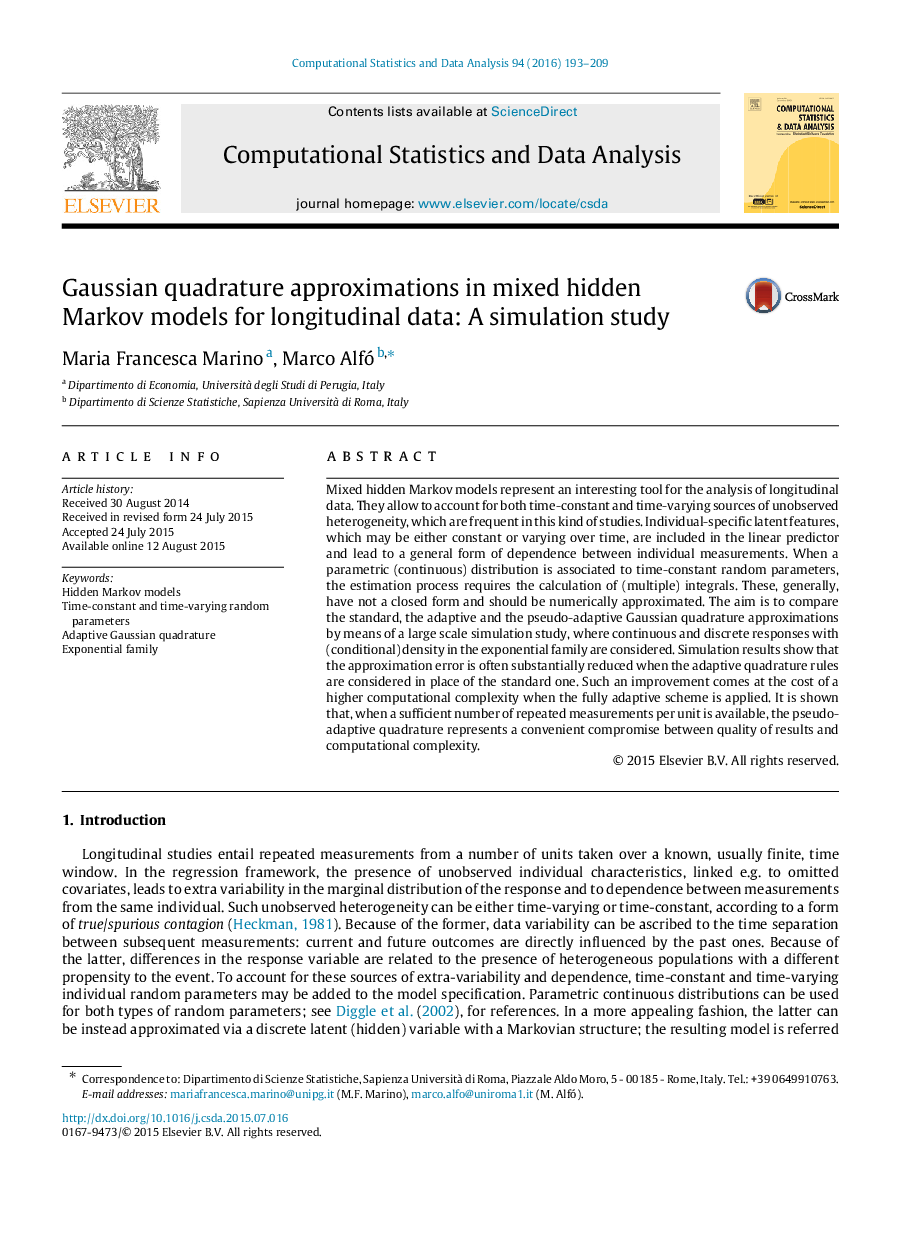| Article ID | Journal | Published Year | Pages | File Type |
|---|---|---|---|---|
| 6869388 | Computational Statistics & Data Analysis | 2016 | 17 Pages |
Abstract
Mixed hidden Markov models represent an interesting tool for the analysis of longitudinal data. They allow to account for both time-constant and time-varying sources of unobserved heterogeneity, which are frequent in this kind of studies. Individual-specific latent features, which may be either constant or varying over time, are included in the linear predictor and lead to a general form of dependence between individual measurements. When a parametric (continuous) distribution is associated to time-constant random parameters, the estimation process requires the calculation of (multiple) integrals. These, generally, have not a closed form and should be numerically approximated. The aim is to compare the standard, the adaptive and the pseudo-adaptive Gaussian quadrature approximations by means of a large scale simulation study, where continuous and discrete responses with (conditional) density in the exponential family are considered. Simulation results show that the approximation error is often substantially reduced when the adaptive quadrature rules are considered in place of the standard one. Such an improvement comes at the cost of a higher computational complexity when the fully adaptive scheme is applied. It is shown that, when a sufficient number of repeated measurements per unit is available, the pseudo-adaptive quadrature represents a convenient compromise between quality of results and computational complexity.
Related Topics
Physical Sciences and Engineering
Computer Science
Computational Theory and Mathematics
Authors
Maria Francesca Marino, Marco Alfó,
